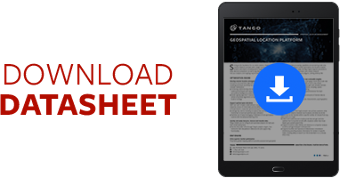Boost Retail Omnichannel Geospatial Analytics Strategy
How are your multiple franchised coffee shops scattered across the city performing? Is your downtown location hurting the sales and foot traffic at your other shop just five miles away? If you open a new shop in the suburbs, how will this affect existing sales across all locations?
 If you are a retailer, these types of questions are critical to your success as digital and physical retail converge and transform consumers into omnichannel shoppers. A high-level analysis alone will not give you a clear view of your customers’ behavior across multiple offline and online. Retailers must have a predictive analytics solution with the necessary intelligence to help develop smarter location strategies by combining advanced modelling with robust data in a scalable geospatial analytics platform.
If you are a retailer, these types of questions are critical to your success as digital and physical retail converge and transform consumers into omnichannel shoppers. A high-level analysis alone will not give you a clear view of your customers’ behavior across multiple offline and online. Retailers must have a predictive analytics solution with the necessary intelligence to help develop smarter location strategies by combining advanced modelling with robust data in a scalable geospatial analytics platform.
Beyond that, firms need to refine their data harvesting strategy. Let’s face it: good data is hard work, and there is a lot out there to sift through. It requires an organization to have the necessary infrastructure in place to process and refine the numbers into accessible information. However, if you are willing to put in the effort, data gleaned from geospatial analytics is a wellspring of granular insights into your customers’ behaviors.
Below, we discuss four steps retailers can take to overhaul their existing geospatial analytics strategy.
- First and foremost, make customer privacy a top priority
As more and more data makes its way online – at the current pace, about 2.5 quintillion bytes of data are created each day breaches are becoming increasingly common. Protect your customers’ privacy and ensure their loyalty by keeping their data safe from potential breaches. Retailers should have security-specific talent that can monitor data and provide mandatory training programs - Build an amazing team to gather and prep data
There’s no “i” in “team”, nor in data. In order to acquire holistic information on your retail locations, you will need to assemble a world-class team to refine the data you gather. Data analysts (or a data-quality manager or business-solution architect) can identify the types of data needed. Then, loop in other departments to help vet data each month, like sales. All teams should cross-reference the information with financial systems. - Get buddy-buddy with your distribution partner
Nobody will fault you for not being on a first-name basis with your retail distribution partner, but now’s the time to cultivate a relationship with this invaluable source of data. Many distributors will provide an “order history report” upon request, which is an excellent source for a brand’s sales data. Account reps will be more than happy to assist you in gathering information units by brand, category, and wholesale door. - Invest carefully in enterprise data management
A retailer should evaluate its use of enterprise data management on an ongoing basis. Prioritize the data sets and sources that matter most to your bottom line. And whatever you select, make sure they are easily findable by the team members who need them. Another important factor in data management: creating and maintaining an acceptable level of quality. If your numbers are scattered around with no definable standard, this will make harvesting data more time-consuming.
Are you ready to supercharge your data strategy? Tango’s Geospatial Location Platform provides a single source of truth for all location information, including sites, stores, offices, production facilities and leases. Learn more by downloading our datasheet below.
